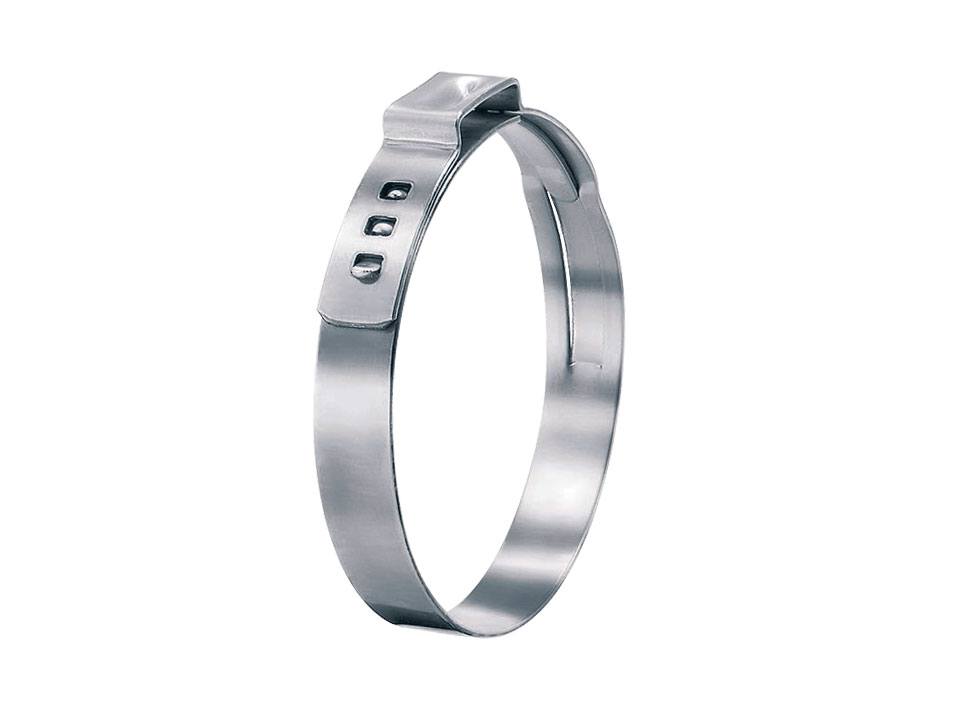StepLess ® Ear Clamps 117 & 167
Narrow band: collects clamp force transfer at one point, lighter
360° StepLess®: homogeneous compression and homogeneous surface pressure
Clamp ear: balances component tolerances, adjustable surface pressure
Pit: increases clamp strength
Non-Burr slitting edges: less risk of damage to clamped parts
Stepless ® ear clamps are manufactured in standard widths and thicknesses. The material sizes selected for a particular application depend on the pressure required to obtain adequate insulation or load. Clamp ear (tightening element) with the help of tools designed or approved by Oetiker, the clamp is tightened by bringing together the oval corners of the "ear" at the bottom. The maximum diameter reduction is proportional to the open "ear" width (s). Outline: to determine the correct clamp diameter, use the hose connection material (ex. push on the nipple and then measure the outside diameter of the hose. Select a clamp whose diameter range average value is slightly larger than the outside diameter of the hose. A clamp can only be considered properly squeezed when the ear width (S) is reduced by at least 40% and the correct tightening force is applied to the assembly.
Block tightening
When the mounting force tightens the ear completely, block tightening results in two earlobes coming into contact (vertical elements between the ear pit and clamp radius). When this occurs, the absorption of the mounting force is achieved by the compression of the feet rather than by the transfer of the mounting forces to the clamped parts. Block tightening should be avoided if mounting forces are to be measured.
Mechanical Lock
The lock is a mechanical system that allows the clamp ends to be joined to allow tightening. Some lock structures can be opened to provide radial joining prior to tightening.
Assembly Proposals
The clamp ear should be tightened at a homogeneous rate not exceeding the recommended maximum tightening force. This ensures that the clamp tension remains constant without overloading the components of the coupled group and clamps. Oetiker calls this method of Assembly "force priority". The force priority method ensures that the tolerance balancing features of the clamp are functional for each assembly. This ensures that the resulting radial force remains virtually the same for each assembly, regardless of the component's dimensional differences. If the ELK electronically controlled pneumatic pliers of Oetiker are used in force priority mode, it is possible to monitor the installation to ensure ecrarable installations of the appropriate force.
Tightening Force
In principle, the choice of tightening force is closely related to the surface pressure of the material to be mounted, or the desired compression. The resistance the clamp is subjected to corresponds to the applied force, so the defined tightening force is significantly reduced in soft materials. Maximum tightening forces are given in the table on the next page according to material sizes. These are especially thermoplastics or other materials with high Shore hardness that are less malleable.
ONURFIX BÜLTEN ABONELİĞİ
Şirketimiz ile ilgili gelişmelerden haberdar olmak için bültenimize kaydınızı yaptırabilirsiniz.



